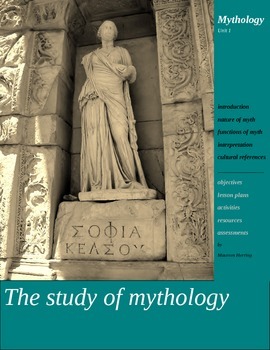Mythology Unit 1 The Study of Mythology
Seanache's Solutions
19 Followers
Grade Levels
9th - 12th
Subjects
Resource Type
Standards
CCSSRL.9-10.1
CCSSRL.9-10.2
CCSSRL.9-10.3
CCSSRL.9-10.4
CCSSRL.9-10.5
Formats Included
- Zip
Seanache's Solutions
19 Followers
Description
Mythology Unit 1 is an introduction to mythology which examines the nature and significance of mythology. Students investigate origins, purposes, and interpretations of myths. The unit is designed to promote close reading, critical thinking, writing using reasoning and evidence, speaking and listening, media creation and other language arts common core learning standards. Powerpoint with script, objectives, activities, assessments, and rubrics are included.
Total Pages
Answer Key
N/A
Teaching Duration
2 Weeks
Report this resource to TPT
Reported resources will be reviewed by our team. Report this resource to let us know if this resource violates TPT’s content guidelines.
Standards
to see state-specific standards (only available in the US).
CCSSRL.9-10.1
Cite strong and thorough textual evidence to support analysis of what the text says explicitly as well as inferences drawn from the text.
CCSSRL.9-10.2
Determine a theme or central idea of a text and analyze in detail its development over the course of the text, including how it emerges and is shaped and refined by specific details; provide an objective summary of the text.
CCSSRL.9-10.3
Analyze how complex characters (e.g., those with multiple or conflicting motivations) develop over the course of a text, interact with other characters, and advance the plot or develop the theme.
CCSSRL.9-10.4
Determine the meaning of words and phrases as they are used in the text, including figurative and connotative meanings; analyze the cumulative impact of specific word choices on meaning and tone (e.g., how the language evokes a sense of time and place; how it sets a formal or informal tone).
CCSSRL.9-10.5
Analyze how an author’s choices concerning how to structure a text, order events within it (e.g., parallel plots), and manipulate time (e.g., pacing, flashbacks) create such effects as mystery, tension, or surprise.





